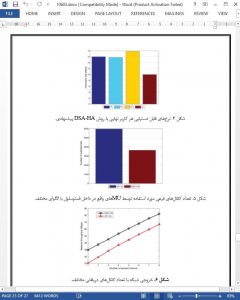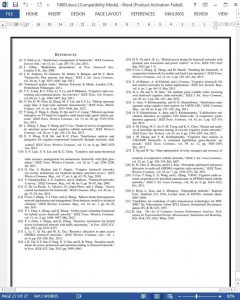Abstract
The cognitive femtocell has emerged as an exciting technology to solve the indoor coverage problem in future cellular networks. Recently, several technical issues for the cognitive femtocell have been studied, e.g., spectrum sharing and interference mitigation. However, the incentive method that is very important for practical hybrid access cognitive femtocell deployment has not been well investigated. In this paper, we propose a new dynamic spectrum allocation method for the hybrid access cognitive femtocell. In the proposed method, the macro base station (BS) allocates a portion of subchannels to the femto access point (FAP) to spur the FAP to serve the macro users (MUs). Then, the FAP allocates the subchannels and power to maximize the femtocell network utility, whereas the throughput of the served MUs is guaranteed. Moreover, we formulate the corresponding resource allocation problem as a sum-utility maximization problem and propose an optimization method to solve it via the dual decomposition method. Simulation results show that both the wireless service provider and the femtocell could benefit from the proposed method.
I. INTRODUCTION
DURING the last decade, the number of wireless communication applications has grown by orders of magnitude in the cellular network. Simultaneously, more and more cellular traffic originates from indoors. A recent survey by ABI has shown that more than 50% voice traffic and 70% data traffic take place in indoor environments such as homes, offices, and airports [1]. However, the shadowing and multipath fading effects are serious in the indoor environment due to wall penetration. Accordingly, the poor quality of service (QoS) is received by the indoor users. For instance, another survey shows that 30% of business users and 45% of household users obtain poor QoS inside buildings [2]. To solve the indoor coverage problem, the femtocell has emerged as an exciting technology in future cellular networks [3].
VII. CONCLUSION
In this paper, we have proposed a dynamic spectrum allocation method to spur both the wireless operator and the FAP to adopt hybrid access in the cognitive femtocell. In the proposed method, the macro BS saves a portion of spectrum while guaranteeing the performance of the MUs, and the FAP obtains more spectrum resource to improve the performances of the FUs. The corresponding resource allocation of the FAP was formulated as an optimization problem, and the dual decomposition method was employed to derive the optimal solution. Simulation results showed that both the wireless service provider and the femtocell could benefit from the proposed method.











